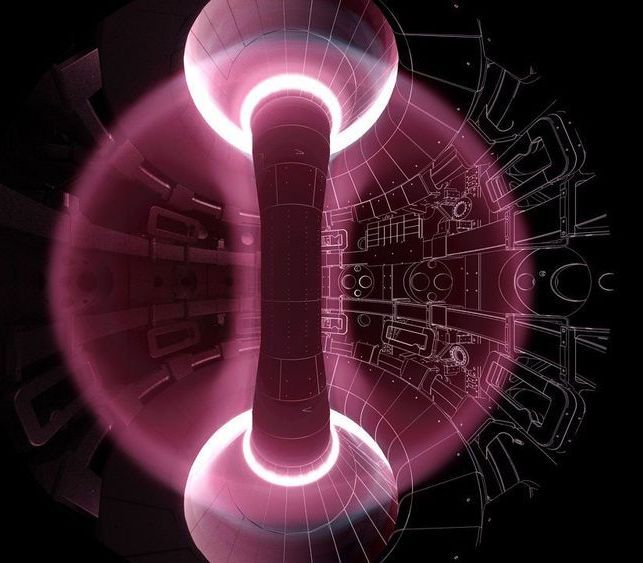The potential for life to emerge around long-lived red dwarf stars may have been oversold.



🌔 An agreement with ESA — European Space Agency to collaborate on #Artemis
💧 Our SOFIA Stratospheric Observatory for Infrared Astronomy finds water molecules on the Moon’s sunlit surface
🛰️ NASA’s OSIRIS-REx Asteroid Sample Return Mission successfully stows the sample it captured from asteroid Bennu.
Watch: youtu.be/XkzB4UZe1JE
Shrinking Down
In a bid to sell more than “several dozen” models, the company is now working on a more accessible, miniature version that records and transmits holograms without taking up the entire height of a room. And, company founder David Nussbaum tells TechCrunch, it comes with new subscription features.
“The minis will be bundled with content like Peloton and Mirror bundled with very specific types of content,” Nussbaum said. “We are in conversations with a number of extremely well-known content creators where we would bundle a portal but will also have dedicated and exclusive content.”
You can buy Universe Sandbox 2 here: http://amzn.to/2yJqwU6
Or get a shirt: https://teespring.com/stores/whatdamath
Hello and welcome! My name is Anton and in this video, we will talk about some of the new discoveries about Venus Flytrap — the most well known carnivorous plant.
Little Shop of Horrors: https://upload.wikimedia.org/wikipedia/commons/8/87/TheLittl…ebmhd.webm
Video used: https://www.youtube.com/watch?v=K-fFqCkZfGE
Paper: https://www.nature.com/articles/s41477-020-00773-1

Astronomer Eamonn Kerins with the University of Manchester has developed an approach to looking for intelligent extraterrestrial beings on other planets that involves using game theory. He has written a paper describing his ideas and has uploaded it to the arXiv preprint server.
The current approach to looking for intelligent life on other planets is basically two-pronged. One approach involves scanning the skies looking for signals from space that could be created by intelligent beings. The other involves scanning the sky for evidence of exoplanets that appear to be habitable. Kerins suggests that a way to meld the two approaches into a logical systematic search for extraterrestrial intelligence is to use some of the logic inherent in game theory.
Kerins starts by noting that it seems possible that the reason scientists on Earth have not discovered signals from beings on other planets is because they are not sending any, fearing that doing so might draw the attention of unfriendly adversaries. He further suggests that if others are out there, they might be listening just as intently as we are. This leads to the SETI paradox, in which everyone is listening but no one is sending. And it also leads to the question of how such a paradox could be resolved. He notes that game theory suggests that both parties should agree that the party with more access to information should be the one that transmits first to the other.

Angelika Amon, professor of biology and a member of the Koch Institute for Integrative Cancer Research, died on Oct. 29 at age 53, following a two-and-a-half-year battle with ovarian cancer.
“Known for her piercing scientific insight and infectious enthusiasm for the deepest questions of science, Professor Amon built an extraordinary career – and in the process, a devoted community of colleagues, students and friends,” MIT President L. Rafael Reif wrote in a letter to the MIT community.
“Angelika was a force of nature and a highly valued member of our community,” reflects Tyler Jacks, the David H. Koch Professor of Biology at MIT and director of the Koch Institute. “Her intellect and wit were equally sharp, and she brought unmatched passion to everything she did. Through her groundbreaking research, her mentorship of so many, her teaching, and a host of other contributions, Angelika has made an incredible impact on the world — one that will last long into the future.”

The United Kingdom’s revamped fusion reactor, known as the Mega Amp Spherical Tokamak (MAST) Upgrade, powered up for the first time yesterday after a 7-year build. The £55 million device will be a testbed for technologies critical to all future fusion reactors, and may provide a stepping stone to a new design of energy-producing facility.
Tokamaks are the frontrunners in the decadeslong effort to generate energy by fusing light elements together. These doughnut-shaped vessels contain a superhot ionized gas—or plasma—of hydrogen isotopes that is constrained with powerful magnets and heated by microwaves and particle beams. (ITER, a gigantic tokamak under construction in France, is a major focus of global efforts to realize fusion power.)
MAST is a variation on the standard tokamak; it is shaped more like a cored apple than a doughnut. Researchers believe that shape can confer greater stability in the roiling plasma than a doughnut-shaped tokamak, but it is less well understood than the traditional design. MAST first tested the concept on a large scale starting in 1999 and has now been upgraded with extra heating power, new technology for extracting heat from the plasma, and other improvements. A parallel effort at the Princeton Plasma Physics Laboratory, called the National Spherical Torus Experiment (NSTX), was similarly upgraded. Soon after restarting in 2016, however, NSTX suffered a magnet failure and is now being rebuilt.


“The logistics of clinical testing don’t let you sample everybody, but sewage does sample everybody.”-Steve Hrudey.
Raw sewage being flushed into Alberta’s municipal wastewater plants could help public health officials better track — and predict — the spread of COVID-19.
A team of Alberta scientists has joined a growing international effort to sample wastewater for traces of SARS-CoV-2, the virus responsible for the disease.
Quantum computers can solve problems in seconds that would take “ordinary” computers millennia, but their sensitivity to interference is majorly holding them back. Now, researchers claim they’ve created a component that drastically cuts down on error-inducing noise.
» Subscribe to Seeker! http://bit.ly/subscribeseeker
» Watch more Elements! http://bit.ly/ElementsPlaylist
» Visit our shop at http://shop.seeker.com
Quantum computers use quantum bits, or qubits, which can represent a one, a zero, or any combination of the two simultaneously. This is thanks to the quantum phenomenon known as superposition.
Another property, quantum entanglement, allows for qubits to be linked together, and changing the state of one qubit will also change the state of its entangled partner.
Thanks to these two properties, quantum computers of a few dozen qubits can outperform massive supercomputers in certain very specific tasks. But there are several issues holding quantum computers back from solving the world’s toughest problems, one of them is how prone qubits are to error.
#computers #quantumcomputers #science #seeker #elements
New detector breakthrough pushes boundaries of quantum computing